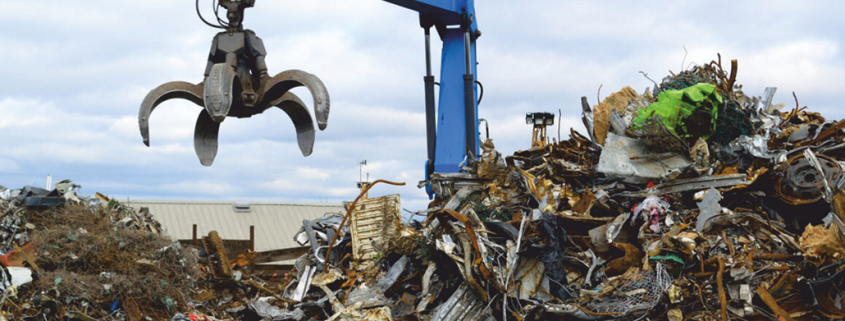A Burning Issue: Mitigating Risks and Ensuring Safety in the Evolving Recycling Industry
The number of fires in the recycling industry is increasing. As we move towards more sustainable practices, increased fire risks are changing, and it is paramount that waste handling sites are able to understand and mitigate these risks.
Hannu Sartovuo, vice president of Dafo Vehicle, discusses why these risks are changing, the lack of regulation in the industry and how small changes can minimize downtime and loss of income for recycling facilities.
The growing hazards
The fire risks at recycling facilities and waste centers are not a new phenomenon, with over 300 fires taking place per year between 2001 and 2013, most individuals are aware of the fire risks that occur due to the combustibility of the materials – paper, plastic, wood and cardboard – that are present at recycling centers. However, despite this knowledge leading to investment into the safety of the industry, the number of fires is on the rise, with fire incidents increasing by six percent at recycling facilities in 2022, when compared to 2021. Fires can range from a minor incident to a complete burnout, though, no matter the size, a fire can cause downtime and damage to a facility, limiting the amount of waste that can be recycled and compromising the income for a recycling plant.
In a twist of fate, one of the culprits for the increasing number of fires is the increase in the number of lithium-ion batteries in the recycling and waste environment. Batteries are driving the sustainability charge, however, due to their increased presence and fire risk, incorrect disposal, which is becoming more and more common, is leading to more fires in waste handling sites.
Nevertheless, lithium batteries that have been disposed of incorrectly are not the only issue. The machinery used in the waste and recycling industry, such as shredders and mobile crushers also present risks. This machinery works long hours with combustible material, which can easily build up in the engine compartment and belly pan of a machine. As the engine and exhaust creates extreme heat during long periods with minimal downtime, fires can easily start, and with plenty of fuel in the waste handling facility, these fires can easily spread.
Understanding the impacts
Due to the flammable material in the recycling center, the effects of a fire can be catastrophic, easily spreading and taking days or weeks to extinguish. That is because the chance of re-ignition is extremely high, as flammable materials come into contact with hot surfaces in the facility.
Materials on fire in a recycling center does not just cause downtime and damage for the owner of the facility but also has additional environmental and social impacts. The burning of materials can release toxic gases and chemicals such as nitrogen oxides, sulfur dioxides, carbon monoxide and dioxin. This does not only negatively affect the environment, which can cancel out the benefits of a recycling plant, but also those who live in residential areas close to recycling plants.
In turn, this can negatively influence the number of recycling plants that can be built, as councils and residents will likely oppose having a facility built near their home due to potential fire and the subsequent release of these gases. This could limit the amount of recycling a country is able to take part in due to a lack of infrastructure.
Regulatory oversight
Despite the Environment Agency implementing a 21 part fire prevention plan for activities that include the storage and handling of combustible waste, the section that discusses the plant and equipment has three vague requirements:
- Have a maintenance and inspection program for static and mobile plant and equipment
- Fit vehicles with fire extinguishers
- Keep mobile plant that is not being used away from combustible waste.
This lack of stringent regulation and specificity for the waste handling industry creates grey areas in fire safety that can lead to increased risks and damage to facilities, as the responsibility lies with insurers and individuals who might not be aware of the changing risks. When implementing a risk assessment, it is important to consider a myriad of factors to understand exactly how they will affect the recycling plant as a whole. For example, it is not just a case of fitting the vehicles with fire extinguishers, but understanding where the risks occur – hydraulics, exhaust, engine and belly pan – and ensuring that fire suppression systems are located to stop a fire before it fully spreads.
Protecting the future of recycling
As legislation can often lag behind change, it is imperative that risk assessments and fire suppression systems are updated as technology changes. For example, as electric and hybrid machinery becomes more popular, risks will change, as lithium-ion batteries present a fire risk both on and off the conveyor belt.
Therefore, with risks on the rise and the industry ever-evolving, every risk must be considered to ensure the UK can continue to recycle as much waste as possible, minimizing the potential for downtime, damage and disruption to the industry.
To find out more about understanding the risks in your industry, visit Dafo Vehicle: dafo-vehicle.com
(Published in GLOBAL RECYCLING Magazine 3/2023, Page 16, Photo: Pearl Communications / dafo)




